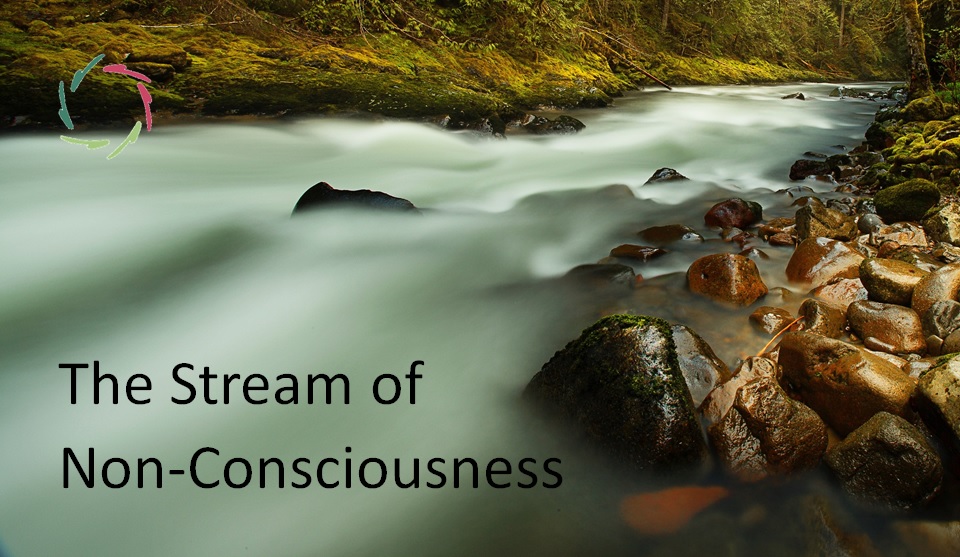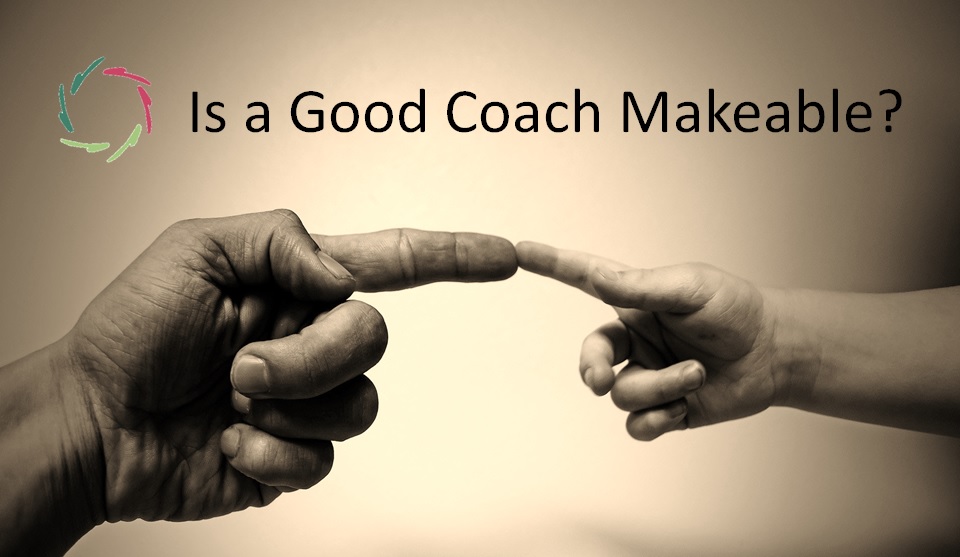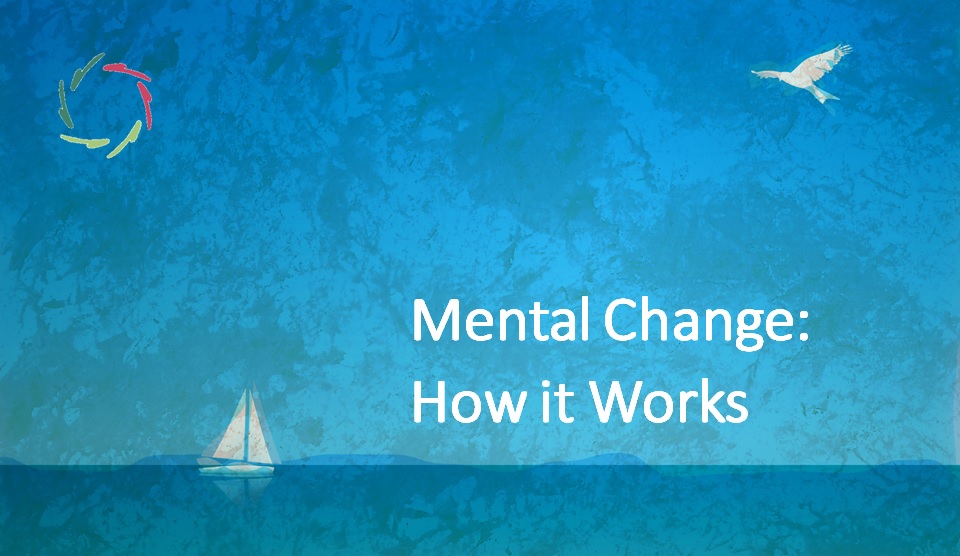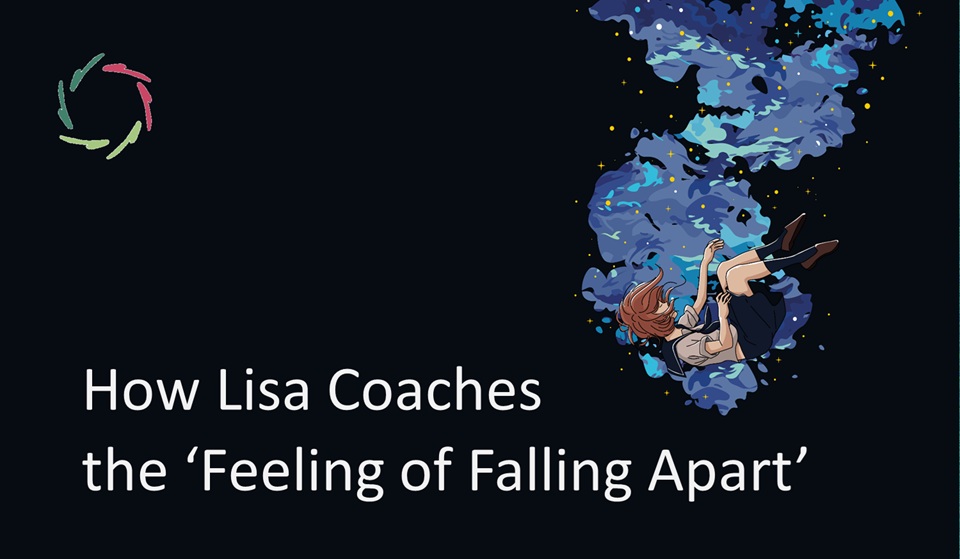The Stream of Non-Consciousness

The conscious train of thought may appear like a self-propelling stream of consciousness. The reality is different, carrying immense consequences.
The image before the thousand words

Please read on. The image and a few consequences will become clear by the end of the words.
Constructed vs. fundamental reality
The horizontal line in the middle schematically divides conceptual and subconceptual processing. [see: “About ‘Subconceptual’”] Looking at the above-line-image, thoughts seem to lead to other thoughts (or feelings, motivations). They don’t. The idea itself that they do is part of a construct. Any ‘house of thoughts’ that is built this way is also a construct. This is pointed to as constructed reality in constructionism. [see: “Constructionism“]
Anything mental really happens in the below-image, where patterns exist that can be seen psychologically or physiologically – at pattern-level being the same. [see: “Patterns in Neurophysiology”]
Fundamental reality is the whole image. It is no reality about the universe [see: “What is Ultimate Truth?”], but at least about us. In my view, a future without this essential insight is not worthwhile.
Poetry, art
Commonly, the poet/artist himself cannot conceptualize well what the piece of art deeply means that he has been producing himself. That issue is, of course, why it’s art and not just, for example, a simple article about some subject. Also, the artist may have the impression that what is coming out of him is not under his conscious control. If control is sought, he risks a writer’s block, or worse, producing bad art. Art is the realm of the subconceptual ― by definition, not easy to conceptualize nor conceptually control.
That doesn’t mean that art is anti-science. It is anti purely-conceptual science. It is anti the idea that only the top of the image counts. Thus, we might need to deepen present-day science to accommodate the artful part of reality ― for example, in total healthcare.
Moreover, scientific inspiration regularly has the same source. I refer to H.Poincaré in [see: “Non-Conscious Processing is Meaningful”], together with other examples of what the bottom of the image is about.
Patterns and deeper patterns
The below-line-image is about patterns in the mind/brain, [see: “Your Mind-Brain, a Giant Pattern Recognizer”] also increasingly being technologically visualized.
Going deep, you gain content while losing form. Very deep, you encounter Eastern’ Emptiness.’ [see: “Emptiness”] Without tradition and proper support, this is somewhat challenging. You lose conceptual thinking. You might ‘lose it’ altogether.
Culturally
In my view, culture should be oriented to nature, not the other way around. If nature-oriented, then culture is the brightest human product. With nature – nature-inside – I mean bottom-image. If done well, culture becomes a part of nature. In that case, I mean the whole image. However, culture can also in-depth have an unsavory influence upon individuals and upon where society may be heading to. This influence may be powerful. [see: “Streaming Underneath”]
I see this as truly a responsibility for the intellectual elite, at least. [see: “The Intellectual Elite – Leaving Nobody Behind”] Actually, it’s for all people, except that not everyone will probably ever be interested.
Scientifically
Scientific – or at least science-compatible – thinking is of utmost importance in this. A degree in science may help. In any case, there is no magic involved (except the magic of being human). Santa Claus does not exist. You may enjoy your children’s belief in him, but grown-ups? Better not.
Even more, conceptual/subconceptual insights specifically enable a scientific view upon what otherwise may get any weird explanation within a swamp of nonsensical non-science. An ivory tower doesn’t help the swamp to dissipate. One needs to get one’s hands dirty to build a better world. One needs to get out of an exclusively above-line image view of the world and deal with the consequences. [see: “Fundamental Reality in Psychology”]
In-coaching
Of course, I also think of AURELIS coaches. AURELIS-coaching is guiding coachees towards change-from-inside (!) through the coach’s specific attitude/mindset and self-oriented techniques of deep empathy. [see: “AURELIS-Coaching: Coach = Coachee”] There is still a discussion about whether it is even possible to deepen one’s empathy as a coach. In view of the image, you might get a feel that it is very well feasible. I had the privilege of witnessing it on many occasions, straight-on and profoundly.
A coach should know the above-specified challenge and have personal experience(s). The coachee might go too deep, then get an unpleasant experience and turn away from it, for always. Or the experience might by itself be very unpleasant and have a directly negative effect. Not everyone can fall into an abyss and survive. One should not throw people into it without first teaching them to fly. This is a considerable coach’s responsibility.
This is no reason to keep everyone as far away from it as possible. On the contrary, it should be intrinsically present within any culture. Unfortunately, Western culture is not very receptive as a whole. That may be a reason for many people’s suffering, psychologically and psychosomatically.
There is a lot of work at hand. Let’s go for it.


